Featured Comment:
“Followed your recipe (vegan/vegetarian dashi) for a school assignment, and was very happy with the outcome of the dish. My brother enjoyed trying it as well. I will come back to this simple and easy-to-follow recipe if the occasion to make kake udon arises again for me. Thank you.”
– Jamin Hanna
What is Kake Udon?
Kake udon is a traditional Japanese dish with thick and chewy udon noodles served in a light dashi broth. It is a delicate and comforting meal that many Japanese people associate with the taste of home.
Udon noodles are made from wheat flour and are known for their neutral flavor, which makes them perfect for simple broths like the one used in kake udon.
The most famous type of udon noodle in Japan is Sanuki Udon, which comes from Kagawa prefecture on the island of Shikoku in southern Japan. These noodles are particularly thick and chewy with flat edges.
Kake udon is the base for most hot udon dishes, and mastering this fundamental recipe will allow you to create other delicious udon dishes, such as Kitsune Udon.
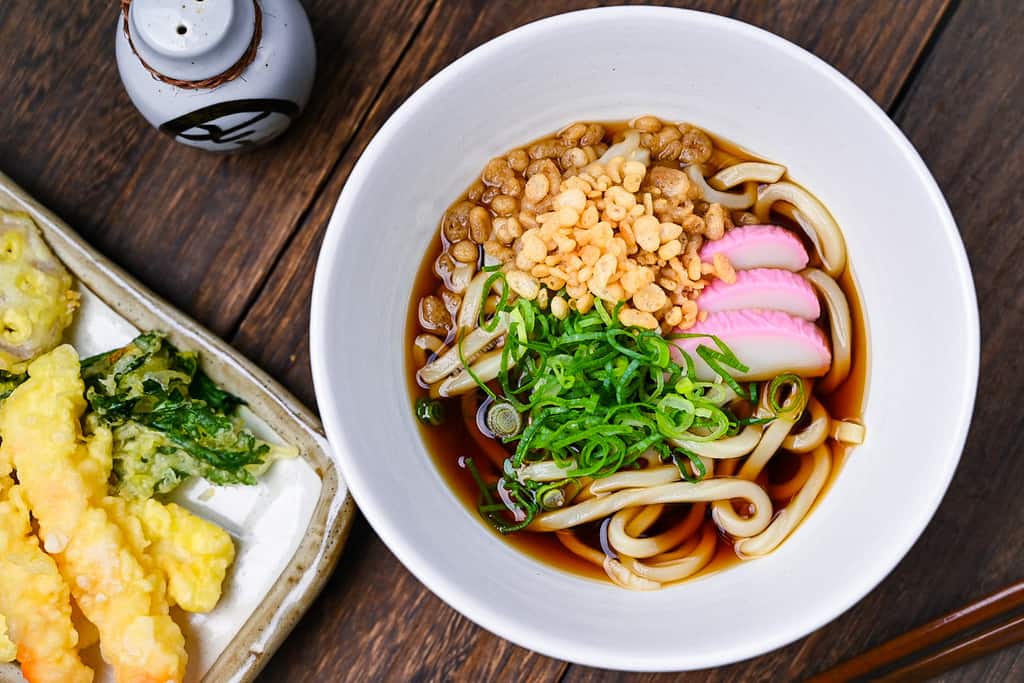

How I Developed This Recipe
Kake udon is the foundation of many udon dishes. When I started putting this recipe together, I was going for simplicity, authenticity, and a touch of casual flair.
Since I nailed this recipe, it’s become my go-to for a lot of other udon dishes.
It’s simple and easy to follow, even if you’re new to cooking. I guarantee that by the end of this article, you’ll have this classic dish down pat!
How to Make The Broth
Kake Udon broth is based on a Japanese soup stock called dashi. This recipe calls for making broth from scratch, but there are other methods that can be used as shortcuts.
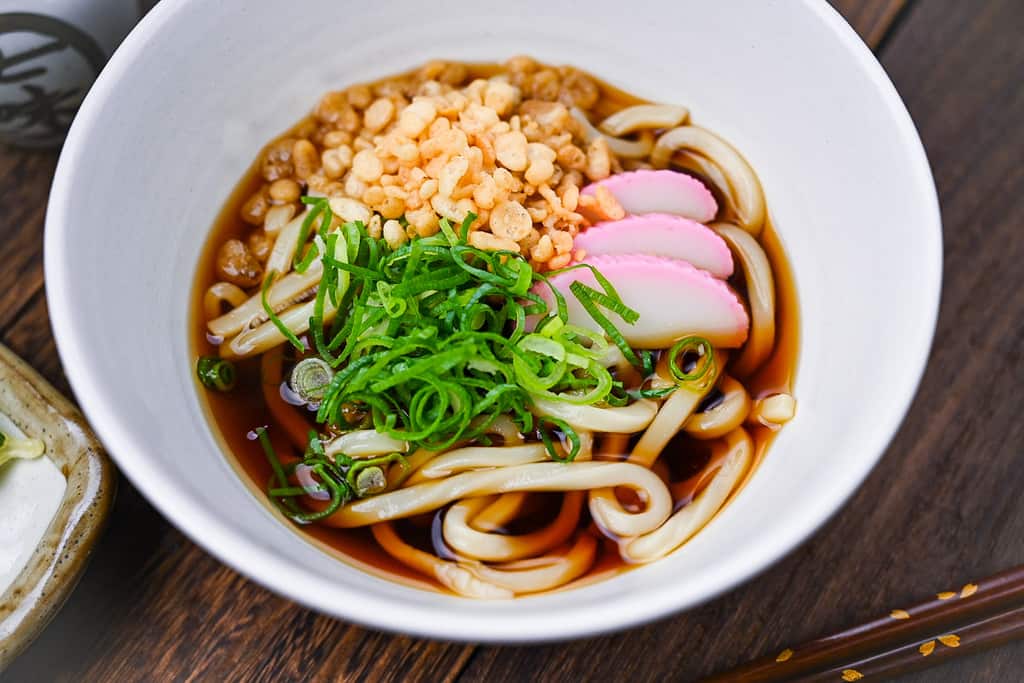
Making Dashi from Scratch (Best Flavor)
To make restaurant-quality kake udon, I recommend making your own dashi. It only takes about 30 minutes, and it’s well worth taking the extra time.
For the most flavorful and authentic tasting awase (mixed) dashi, I like to use:
- Kombu (dried kelp)
- Katsuobushi (bonito flakes)
- Niboshi / Iriko (dried sardines)
If you’re vegetarian or vegan, check out my plant based dashi recipe here.
Once the dashi is made, we flavor it with soy sauce and mirin to make the kake udon broth.
Using Instant Dashi (Quick)
If you want to save yourself some hassle, you don’t necessarily have to make your own dashi from scratch. You can also buy the following on Amazon:
Instant dashi granules are usually made mainly from bonito (skipjack tuna) powder.
For these options, follow the instructions on the package and add the soy sauce and mirin accordingly.
Using Mentsuyu (Easy)
The last option is to use “mentsuyu” (めんつゆ). Mentsuyu is a sauce used for making broths and dips for noodles. It is a concentrated noodle broth, and you simply dilute it according to the dish you’re making.
Although it might vary depending on the brand, these are the general dilution ratios:
- Dipping sauce for noodles (1 part tsuyu : 2 parts water)
- Noodle broth like Kake Udon (1 part tsuyu : 5~7 parts water)
- Tempura/donburi (1 part tsuyu : 2~3 parts water)
- Boiling nimono dishes (1 part tsuyu : 2-4 parts water)
- Hot pots (1 part tsuyu : 8~9 parts water)
- Oden (1 part tsuyu : 12~14 parts water)
Check the bottle for “めんのかけ汁” for the ratio of tsuyu to water for kake udon. Since mentsuyu already contains soy sauce and mirin, you don’t need to add any other condiments to the broth.
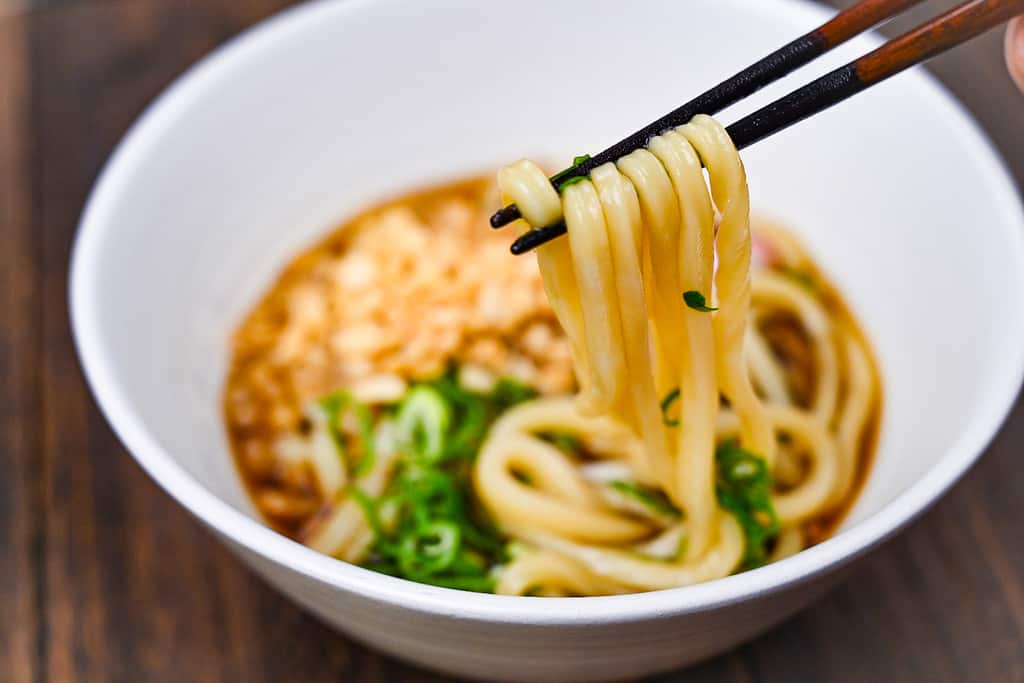
Topping Ideas: What to Put in Udon?
Once you have your perfect udon and broth, it’s time to add toppings. There are so many things you can add to udon. Here are a few of the most popular:
- Green onion
- Katsuobushi (bonito flakes)
- Nori (dried seaweed)
- Tenkasu (tempura flakes)
- Kamaboko / Narutomaki (Japanese fishcakes)
- Egg (raw, soft-boiled, hot spring egg)
- Inari Age (sweet fried tofu pocket)
- Wakame (seaweed)
- Grated ginger
It’s common to serve kake udon with tempura or a smaller serving of donburi (rice bowl).
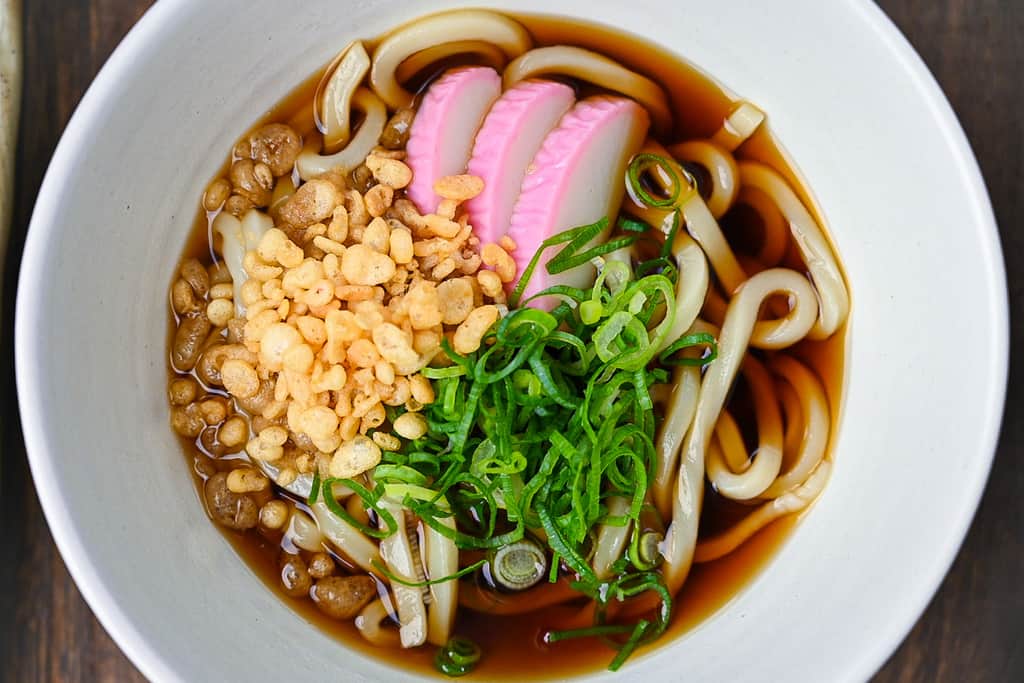
Visual Walkthrough & Tips
Here are my step-by-step instructions for how to make simple and authentic Japanese Kake Udon at home. For ingredient quantities and simplified instructions, scroll down for the Printable Recipe Card below.
If you prefer to watch the process in action, check out my YouTube video of this recipe for a complete visual walkthrough!
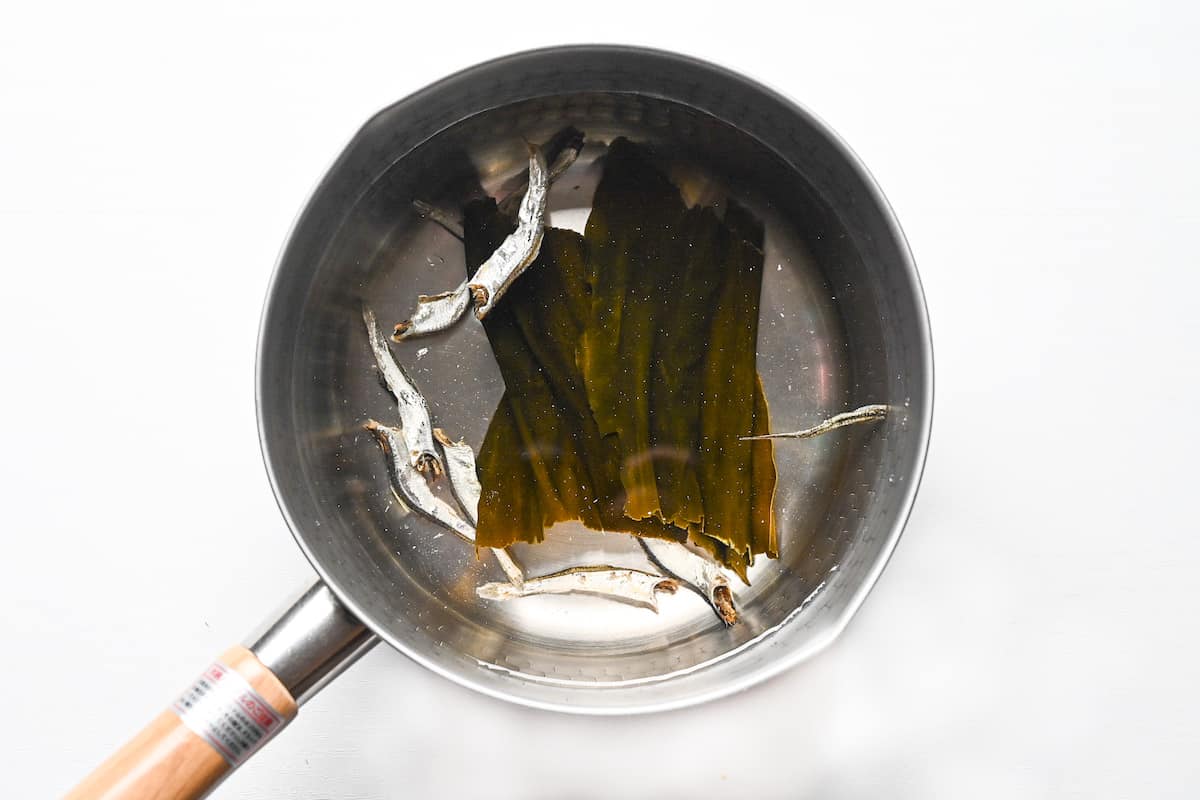
Place the kombu in a pot of water and soak for 30 minutes. If you’re using dried sardines (recommended but optional), break off the heads and place them in the water too.
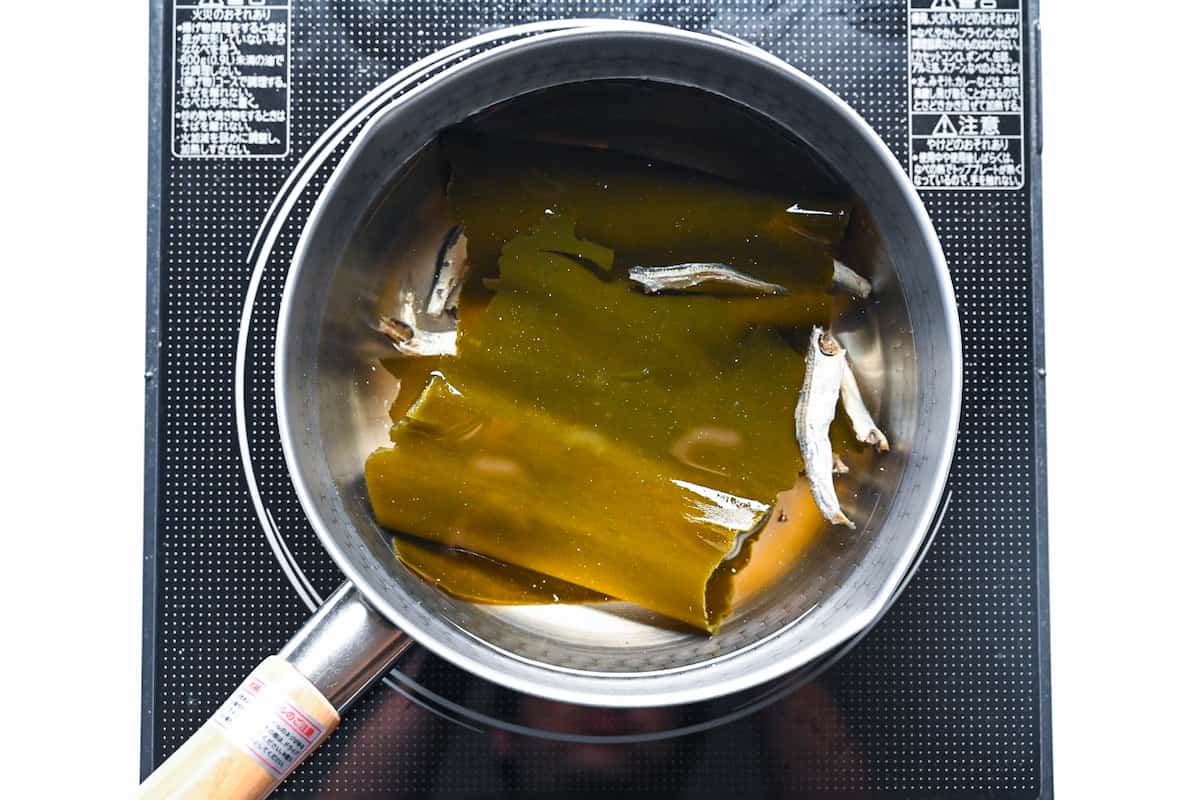
Once 30 minutes have passed, the kombu should be rehydrated. Place the pot on the stove and start heating on medium-low.
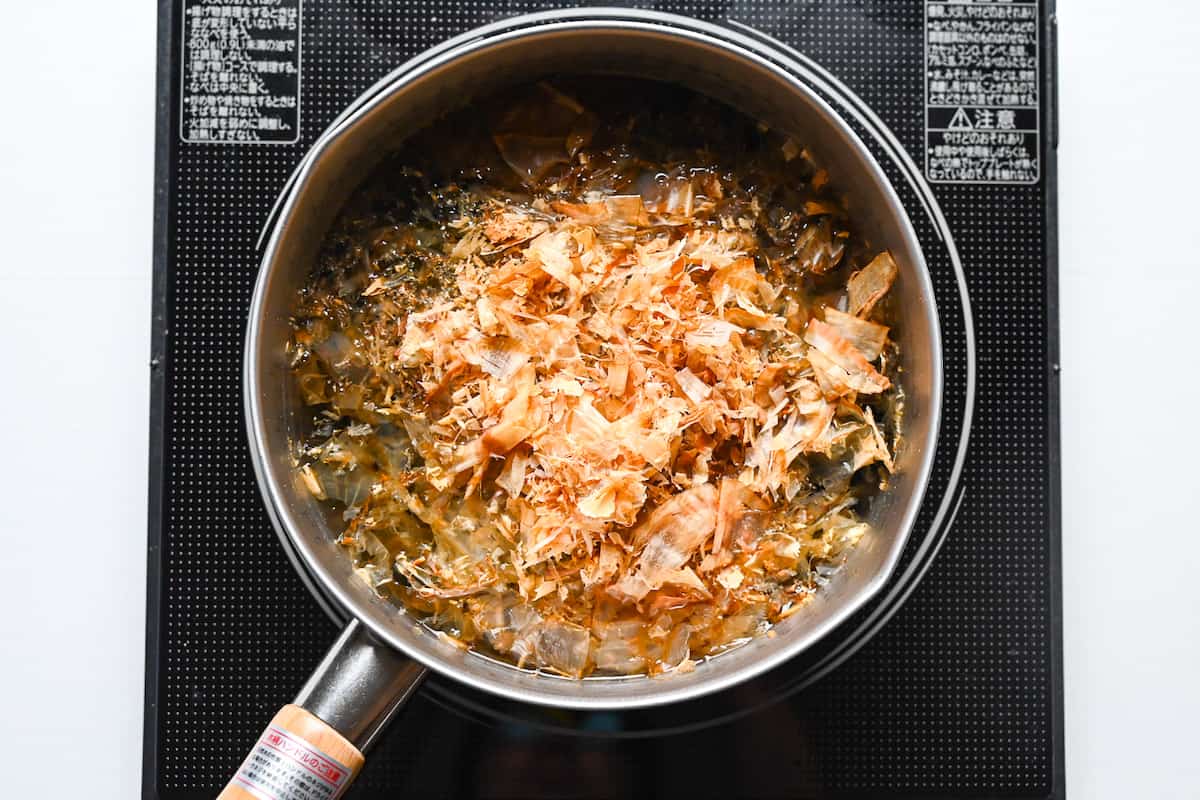
Add the bonito flakes and take it off the heat when small bubbles start to appear. Do not let it boil.
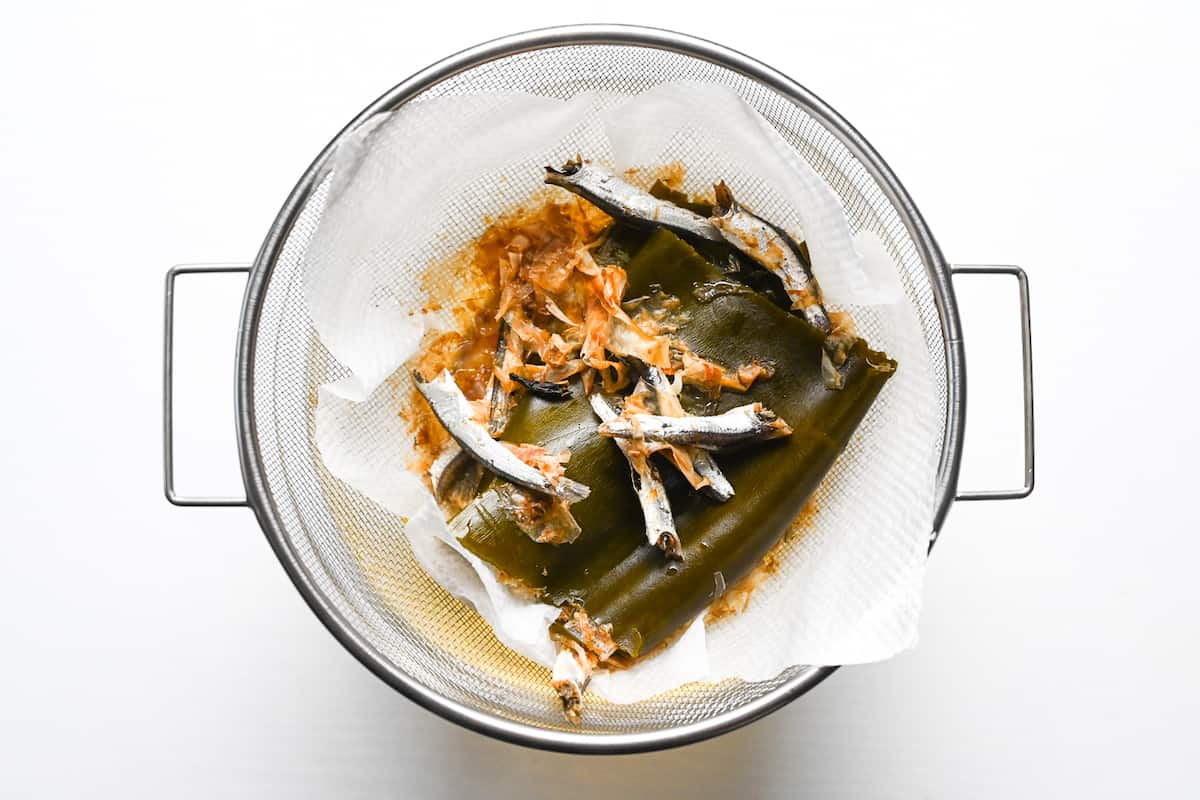
Line a fine mesh sieve over a heatproof bowl and pour the dashi through. This will catch all the tiny pieces of bonito flakes.
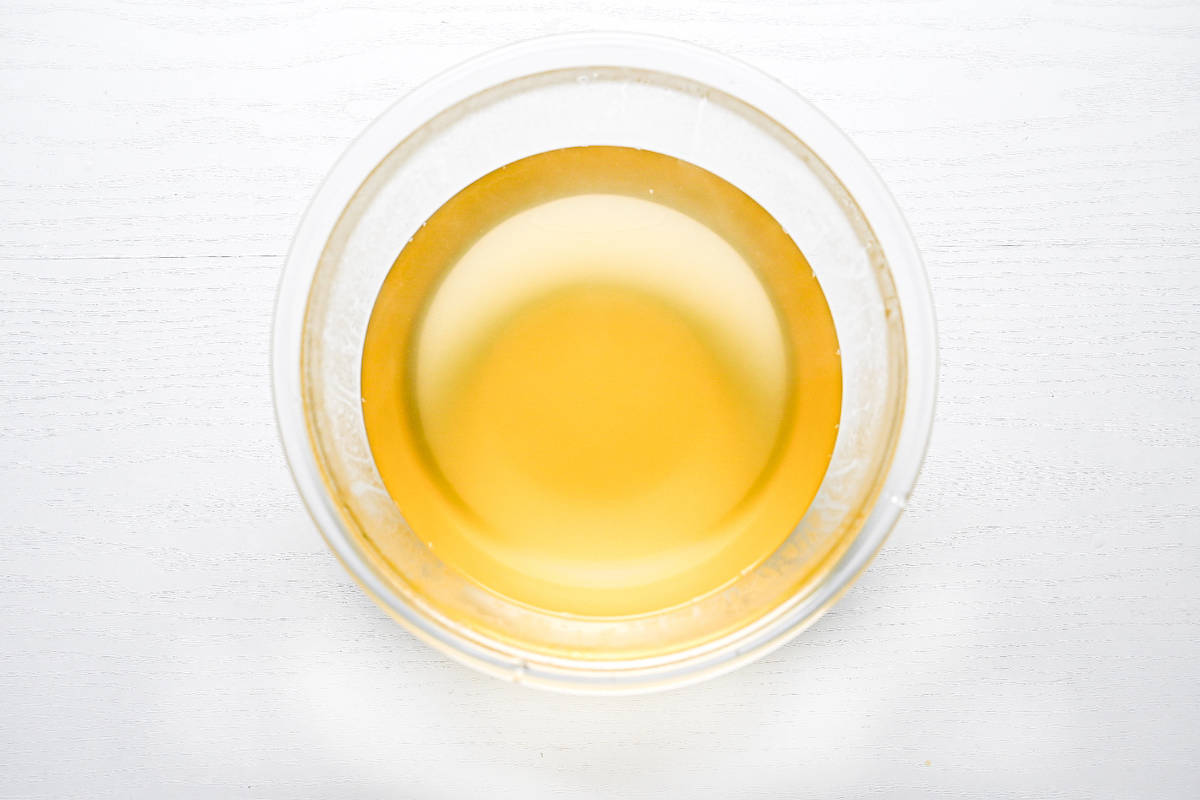
You should be left with a clear golden broth like this!
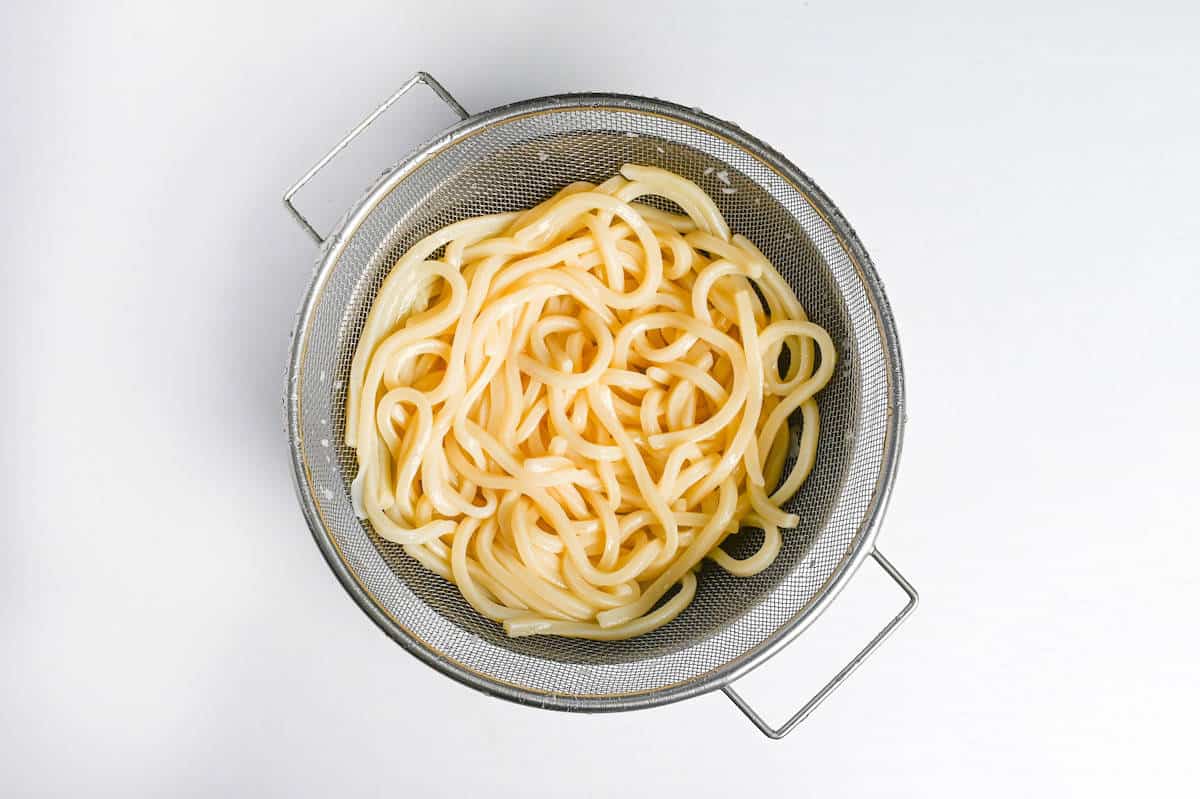
Cook the udon noodles according to the instructions on the packaging. Once cooked, drain and rinse with hot water to remove the excess starch. You can make the broth while the noodles are cooking.
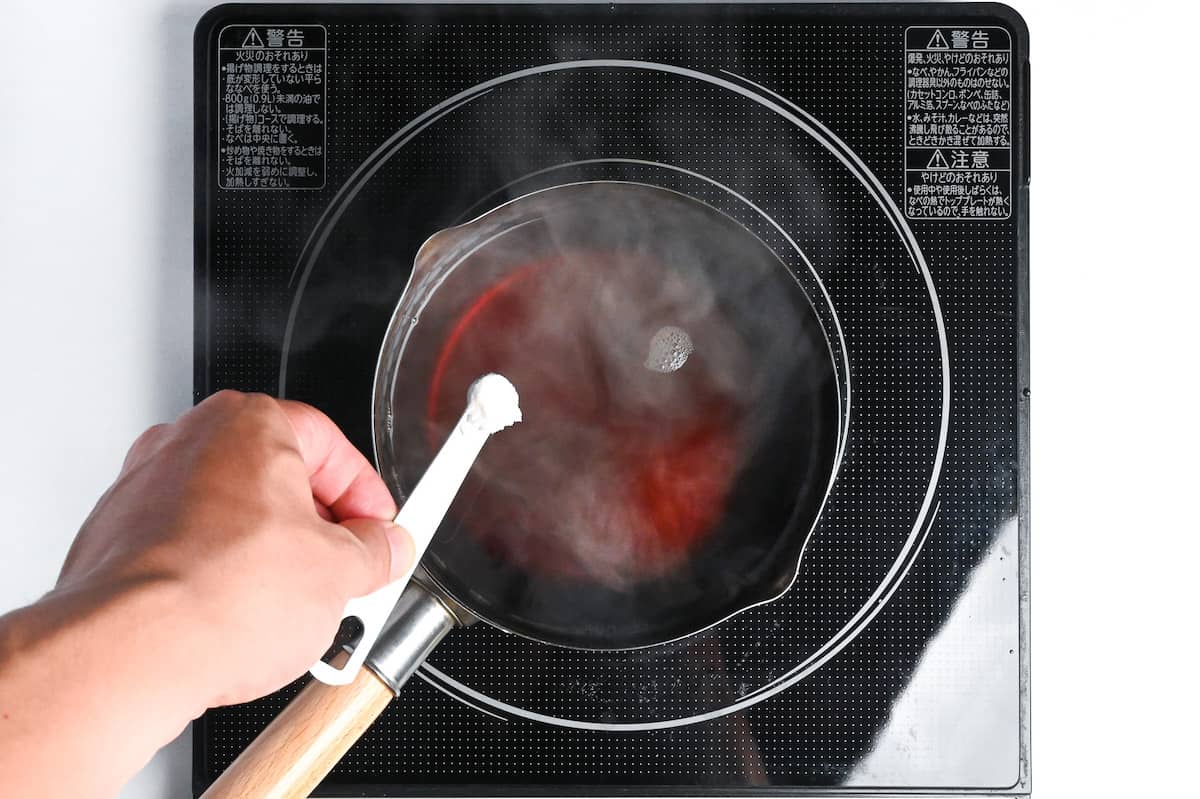
Pour the dashi into a pot and add soy sauce and mirin. Boil over a high heat for 1-2 minutes and then turn it off. Mix in the salt until dissolved.
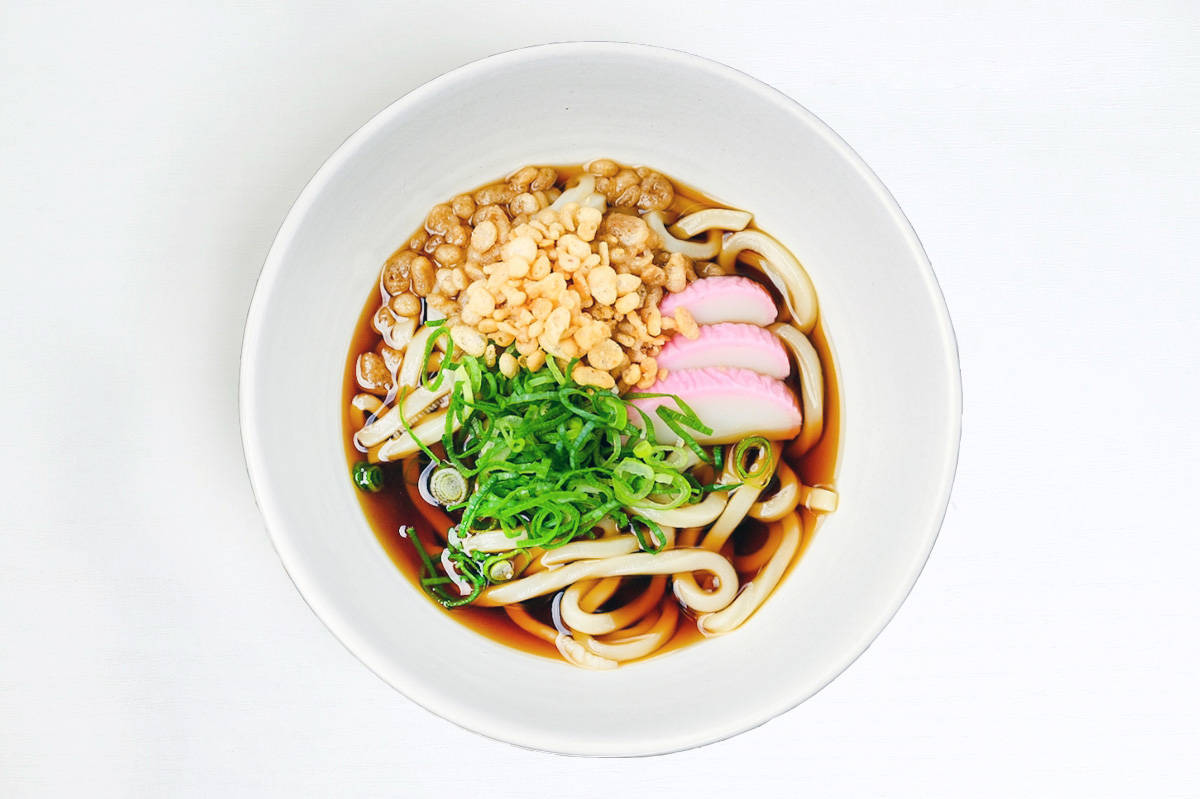
Divide the noodles and broth into serving bowls and add your choice of toppings. I used tempura flakes, kamaboko (fishcakes) and chopped green onion, but feel free to customize and make it your own!
Enjoy!
Jump to Full Recipe MeasurementsHow to Store
Udon noodles in soup should be consumed immediately after cooking, however, if you made too much, the noodles and soup can be stored separately.
Cooked udon noodles can be wrapped into individual portions and refrigerated for about 24 hours. Since refrigeration will dry them out and make them stick together, pour boiling water over them to loosen them before eating. Freezing is the best storage method and can last for up to one month. To reheat, simply boil from frozen or microwave them. (Do not thaw as this will make them soggy.)
The broth or dashi can be refrigerated for up to 5 days or frozen for a month. If freezing, divide it into portions for convenience.
Storage summary
Room temperature – Not recommended.
Refrigerated – Cooked udon, 24 hours. Broth, 5 days. (Store separately.)
Frozen – Up to 1 month stored separately.
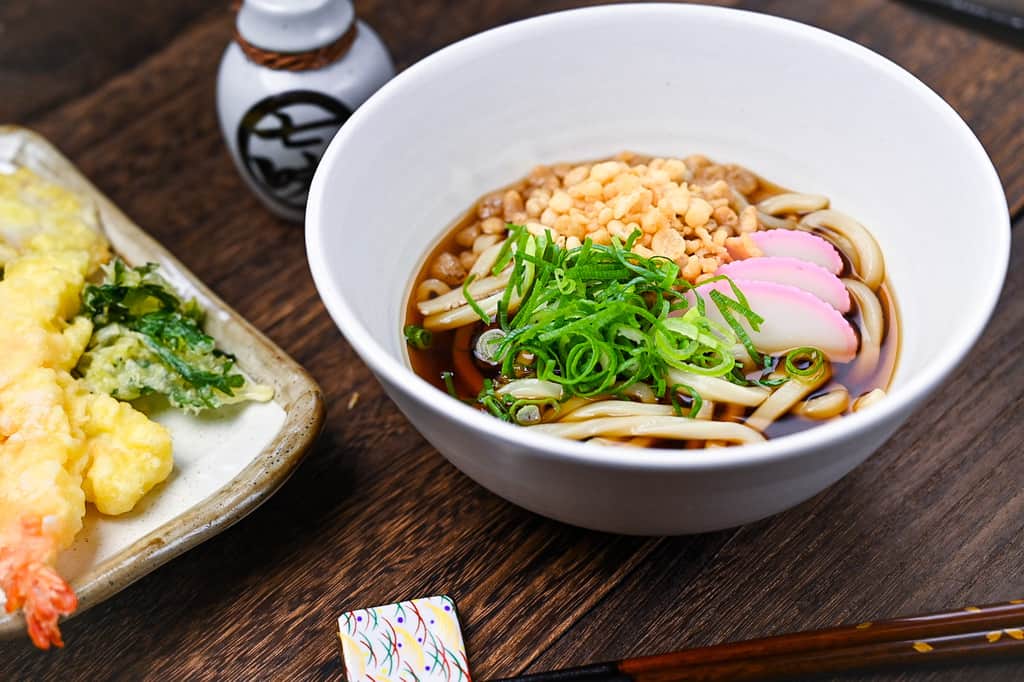
I hope you enjoy this Kake Udon recipe! If you try it out, I’d really appreciate it if you could spare a moment to let me know what you thought by giving a review and star rating in the comments below. It’s also helpful to share any adjustments you made to the recipe with our other readers. Thank you!
More Japanese Udon Recipes
- Curry Udon (Udon noodles in a curry broth)
- Yaki Udon (Udon noodles stir-fried in garlic butter and soy sauce)
- Zaru Udon (Chilled udon with homemade dipping sauce)
- Niku Udon (Hot udon in broth with beef)
For more authentic Japanese udon dishes, please see my udon recipe collection article.
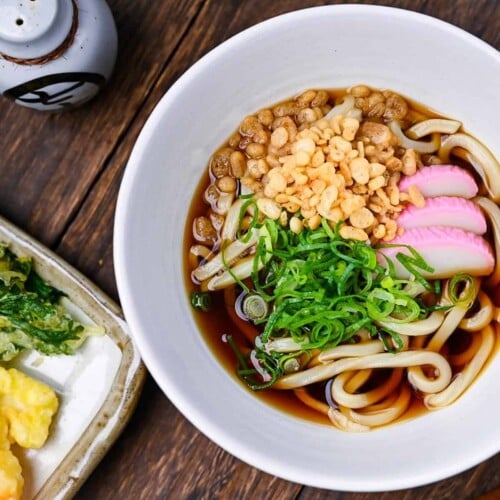
Simple Udon Noodle Soup (Kake Udon)
Ingredients
Dashi Broth
- 10 g dried sardines (niboshi) substitute for dried shiitake mushrooms for plant-based diets
- 10 g dried kelp (kombu)
- 15 g bonito flakes (katsuobushi) (katsuobushi) omit for plant-based diets
- 1000 ml water
- 5 tbsp Japanese soy sauce (koikuchi shoyu)
- 2 tbsp mirin
- ½ tsp salt
Contents
- 5 portions udon noodles
- 5 tbsp finely chopped green onions
- toppings of your choice see in post
My recommended brands of ingredients and seasonings can be found in my Japanese pantry guide.
Can’t find certain Japanese ingredients? See my substitution guide here.
Instructions
Making Awase Dashi
- Remove and discard the heads of 10 g dried sardines (niboshi).

- Pour 1000 ml water into a pot and add the dried sardines and 10 g dried kelp (kombu). Cover and soak for 30 minutes. (If making it plant-based, add 1-2 dried shiitake mushrooms instead of niboshi.)

- After 30 minutes, place the pot on the stove and start heating on medium-low.

- Add 15 g bonito flakes (katsuobushi).

- Allow the dashi to heat up slowly until small bubbles start to appear, then turn off the heat. Do not let it boil.

- Take a large heatproof bowl and place a sieve lined with kitchen paper.

- Pour the dashi through the sieve, allowing the clear broth to pass through into the bowl.

- The dashi is complete and ready to use. Leftovers can be stored (see note).

Udon and Broth
- Boil 5 portions udon noodles according to the instructions on the packaging. Once cooked, pour through a sieve of colander to drain and wash with fresh hot water to remove any excess starch.

- Pour the dashi broth back into the pan and add 5 tbsp Japanese soy sauce (koikuchi shoyu), 2 tbsp mirin and bring to a boil over a medium-high heat.

- Let it bubble for 1-2 minutes to burn the alcohol away from the mirin, then turn off the heat and mix in ½ tsp salt.

- Divide the noodles and broth into serving bowls and add the toppings of your choice.

- Enjoy!
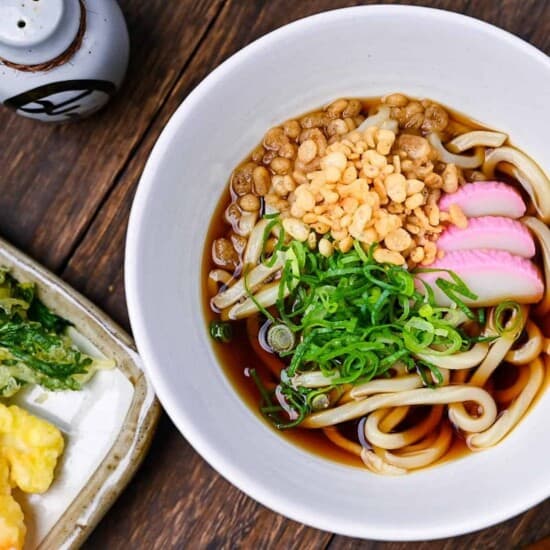




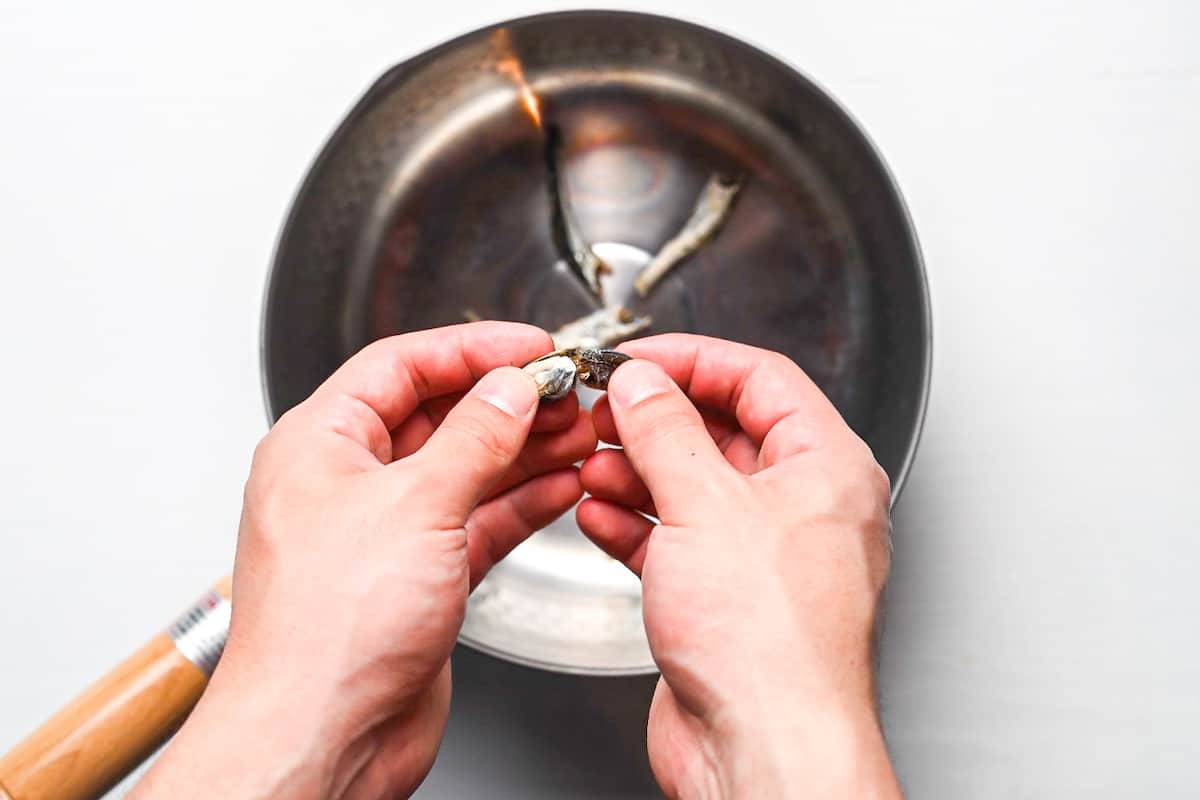
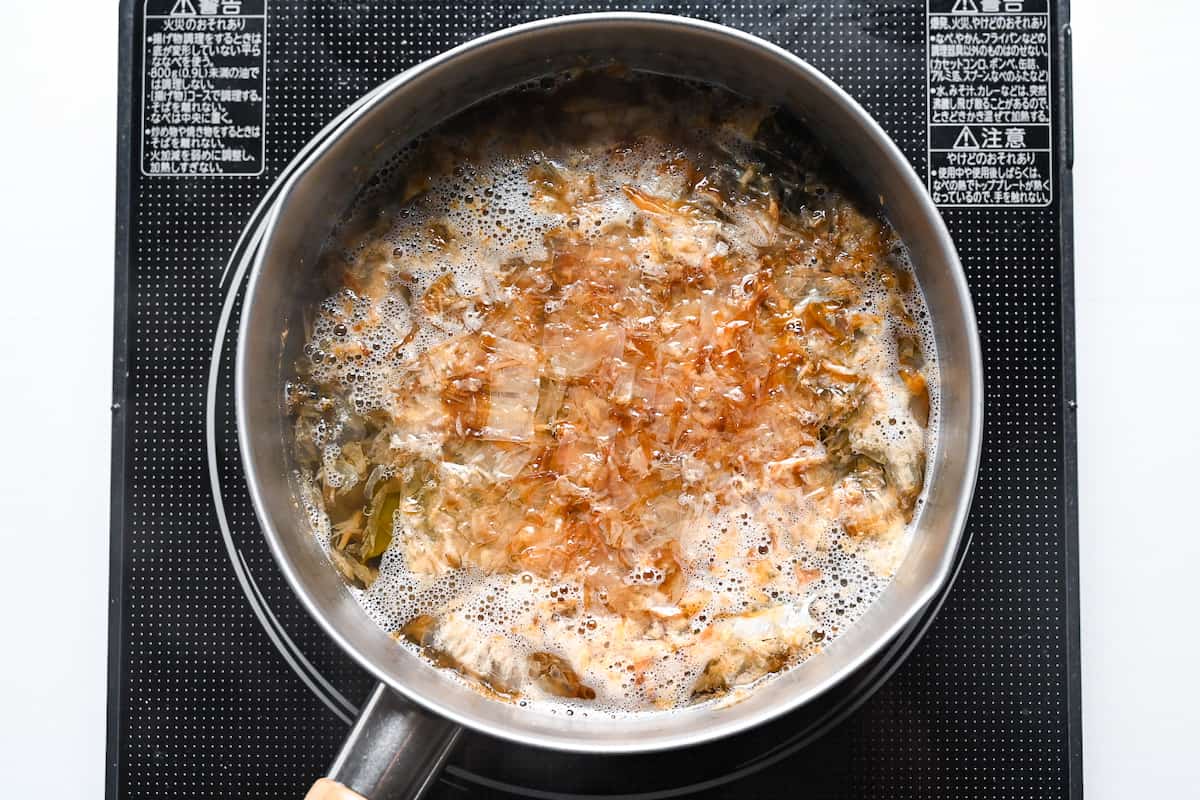
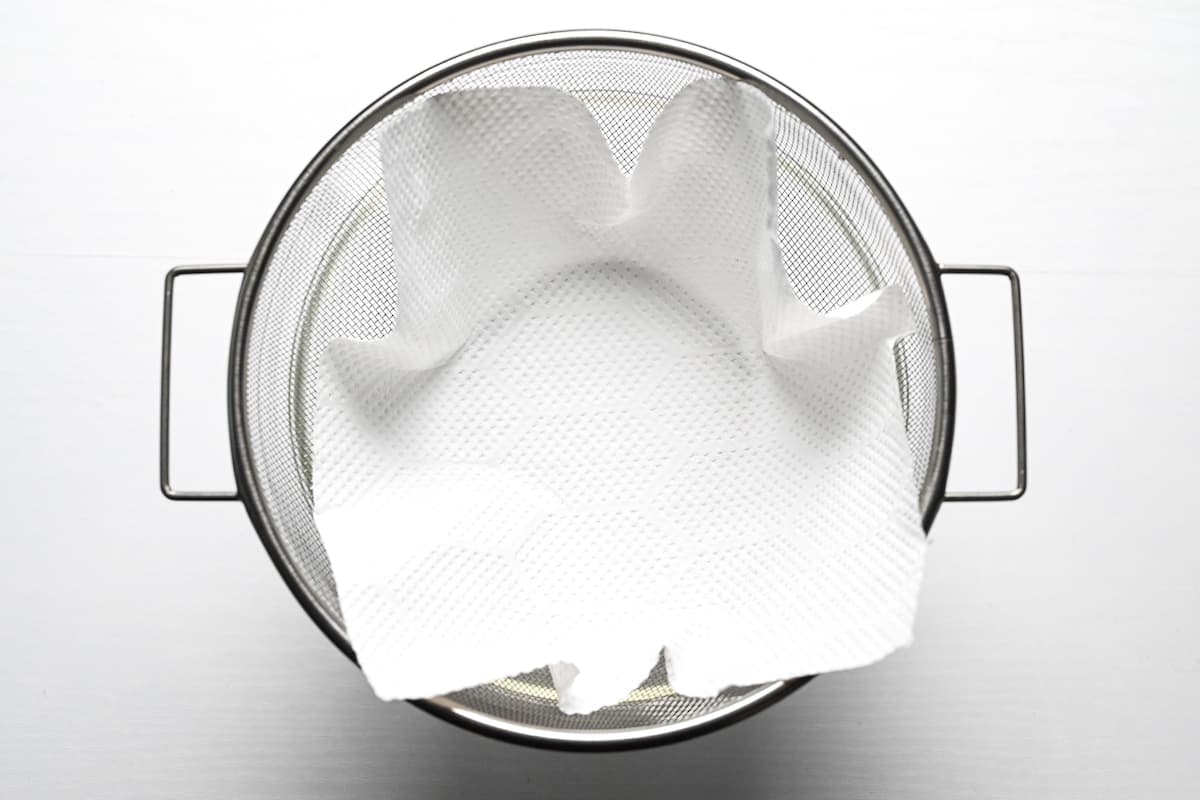
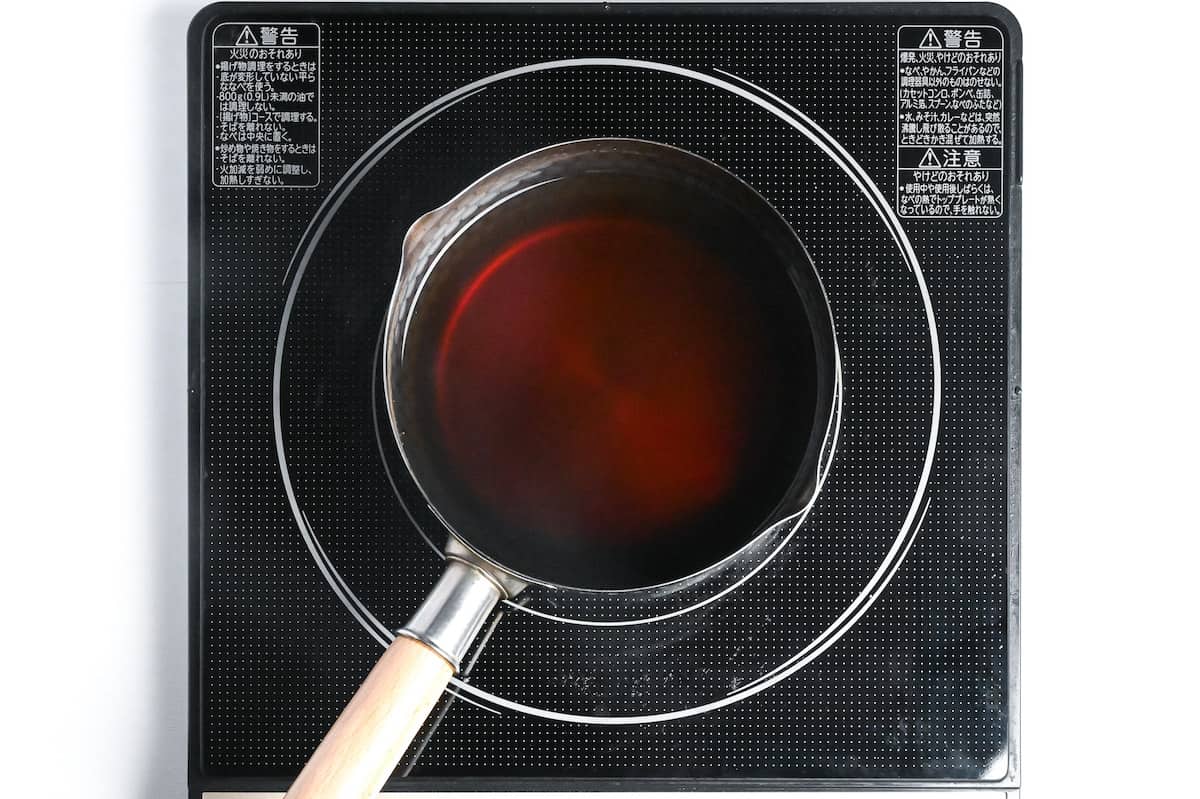
Followed your recipe (vegan/vegetarian dashi) for a school assignment (nutrition class), and was very happy with the outcome of the dish. My brother enjoyed trying it as well. I will come back to this simple and easy-to-follow recipe if the occasion to make kake udon arises again for me. Thank you.
Hi Jamin,
Thank you for trying my recipe, I’m happy to hear you and your brother enjoyed it.
I hope your assignment went well! All the best.
Perfect noodles and dashi broth! Brings back wonderful memories from Japan.
Domo arigato gozaimasu, sensei!
Hi Andral,
Thank you so much for your comment! I’m happy that this recipe brought back good memories of Japan for you! 🙂
Yuto